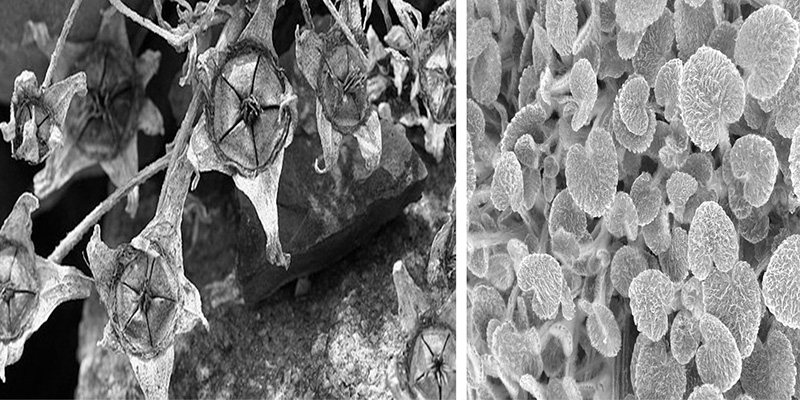Downloads
DOI:
https://doi.org/10.7480/jfde.2015.1.916Keywords:
Active materials, adaptive architecture, biomimetics, energy efficiency, plantsAbstract
In this paper, the authors present research into adaptive architectural envelopes that adapt to environmental changes using active materials, as a result of application of biomimetic principles from plants to architecture. Buildings use large amounts of energy in order to maintain their internal comfort, because conventional buildings are designed to provide a static design solution. Most of the current solutions for facades are not designed for optimum adaptation to contextual issues and needs, while biological solutions to adaptation are often complex, multi-functional and highly responsive. We focus on plant adaptations to the environment, as, due to their immobility, they have developed special means of protection against weather changing conditions. Furthermore, recent developments in new technologies are allowing the possibility to transfer these plant adaptation strategies to technical implementation. These technologies include: multi-material 3D printing, advances in materials science and new capabilities in simulation software. Unlike traditional mechanical activation used for dynamic systems in kinetic facades, adaptive architectural envelopes require no complex electronics, sensors, or actuators. The paper proposes a research of the relationship that can be developed between active materials and environmental issues in order to propose innovative and low-tech design strategies to achieve living envelopes according to plant adaptation principles.
How to Cite
Published
Issue
Section
License
Copyright (c) 2015 Marlen Lopez, Ramon Rubio, Santiago Martın, Ben Croxford, Richard Jackson

This work is licensed under a Creative Commons Attribution 4.0 International License.
Authors or their institutions retain copyright to their publications without restrictions.
References
Addington, M., Schodek, D. (2004). Smart Materials and Technologies. For the Architecture and Design Professions. Oxford, United Kingdom: Architectural Press.
Almusaed, A., (2011). Biophilic and Bioclimatic Architecture. Analytical Therapy for the Next Generation of Passive Sustainable Architecture. London: United Kingdom: Springer-Verlag.
Armstrong, R. (2012). Living Architecture. How Synthetic Biology Can Remake Our Cities and Reshape Our Lives. Kindle Single, TED Books. [online]. Available at: http://www.amazon.co.uk/Living-Architecture-Synthetic-Biology-ebook/dp/B0076QQJMY
Azcón-Bieto, J. & Talón, M. (2000). Fundamentos de fisiología vegetal. Barcelona, Spain: McGraw-Hill Interamericana.
Badarnah, L. (2012). Towards the LIVING envelope: biomimetics for building envelope adaptation. Delft University of Technology. doi:10.4233/uuid:4128b611-9b48-4c8d-b52f-38a59ad5de65
Beesley, P. (2006). Responsive Architectures: Subtle Technologies. Canada: Riverside Architectural Press.
Bhushan, B. (2009). Biomimetics: lessons from nature – an overview. Philosophical Transactions of the Royal Society 367, 1445-1486. doi: 10.1098/rsta.2009.0011
Del Grosso A.E. & Basso P. (2010). Adaptive building skin structures, Smart Materials and Structures, 19, 12. doi:10.1088/0964-1726/19/12/124011
Dobzhansky, T., Hecht, M. K., Steere, W. C. (1968). On some fundamental concepts of evolutionary biology. Evolutionary biology, 2, 1-34. New York, NY: Appleton-Century-Crofts.
Fortmeyer, R. & Linn, C. (2014). Kinetic Architecture: Design for Active Envelopes. Mulgrave, Australia: Images Publishing.
Ge, Q., Qi, H. J., Dunn, M. L. (2013). Active materials by four-dimension printing. Applied Physics Letters, 103 (13): 131901. doi: 10.1063/1.4819837
Gibson, L. (2012). The hierarchical structure and mechanics of plant materials. Journal of the Royal Society Interface, 12, 106. doi: 10.1098/rsif.2012.0341
Howes, P., Laughlin, Z. (2012). Material Matters: New Materials in design. London, United Kingdom: Black Dog Publishing.
Jiang, H. Y., Kelch, S., Lendlein, A. (2006). Polymers Move in Response to Light, Advanced Materials, 18(11), 1471-1475. doi: 10.1002/adma.200502266
Kamal-Chaoui, L. & Robert A. (2009). Competitive Cities and Climate Change. OECD Regional Development Working Paper. Paris, France: OECD.
Kim Sung, D. (2013). Metal that breathes, On-line: TEDxUSC. Available: http://www.ted.com/speakers/doris_kim_sung.html
Koch, K., Bhushan, B., and Barthlott, W. (2009). Multifunctional surface structures of plants. An inspiration for biomimetics. Philosophical Transactions of the Royal Society, 367, 1487-1509. doi: 10.1098/rsta.2009.0022
Lin, S., Theato, P. (2013). CO2-responsive polymers, Macromolecular rapid communications, 34(14), 1118-1133. doi: 10.1002/marc.201300288
Martin, E. S., Donkin, M. E. and Stevens, R. A. (1983). Stomata, London: Edward Arnold.
Mazzoleni, I. (2013). Architecture Follows Nature-Biomimetic Principles for Innovative Design, New York, NY: CRC Press.
Menges, A. (2012). Material Computation. Higher Integration in Morphogenetic Design, Architectural Design, 82, London, United Kingdom: Wiley Academy.
Oxman, N. (2012). Programming Matter. Architectural Design, 8, 88-95. doi: 10.1002/ad.1384
Pawlyn, M. (2011). Biomimicry in Architecture. London, United Kingdom: RIBA Publishing.
Park, J. J., Dave, B. (2014). Bio-inspired Parametric Design of Adaptive Stadium Facades. Australasian Journal of Construction Economics and Building Conference Series, 2, 27-35. doi: http://dx.doi.org/10.5130/ajceb-cs.v2i2.3886
Raviv, D., Wei, Z., McKnelly, C., Papadopoulou, A., Kadambi, A., Shi, B., et al. (2014). Active printed materials for Complex self-evolving deformations, Scientific Reports 4, 7422. doi:10.1038/srep07422
Reichert, S., Menges, A., Correa, D. (2014). Meteorosensitive architecture: Biomimetic building skins based on materially embedded and hygroscopically enabled responsiveness. Computer-Aided Design, 60, 50-69. doi: 10.1016/j.cad.2014.02.010
Rivas-Martínez, S. (2011). Worldwide Bioclimatic Classification System, Global Geobotany, 1(1). doi: 10.5616/gg110001
Ryu, J., D’Amato, M., Cui, X., Long, K. N., Qi, H. J., Dunn, M. L. (2012). Photo-origami. Bending and folding polymers with light, Applied Physics Letters, 100(16), 161908.
Spiller, N., Armstrong, R. (2011). It’s a Brand New Morning, Protocell Architecture. Architectural Design, 81. London, United Kingdom: Wiley Academy.
Vincent, J., Bogatyreva O., Bogatyrev N., Bowyer, N., and Pahl, K. (2006). Biomimetics: its practice and theory. Journal of the Royal Society Interface, 3(9), 471-482. doi:10.1098/rsif.2006.0127
Vogel, S. (2012). The life of a leaf, University of Chicago Press.
